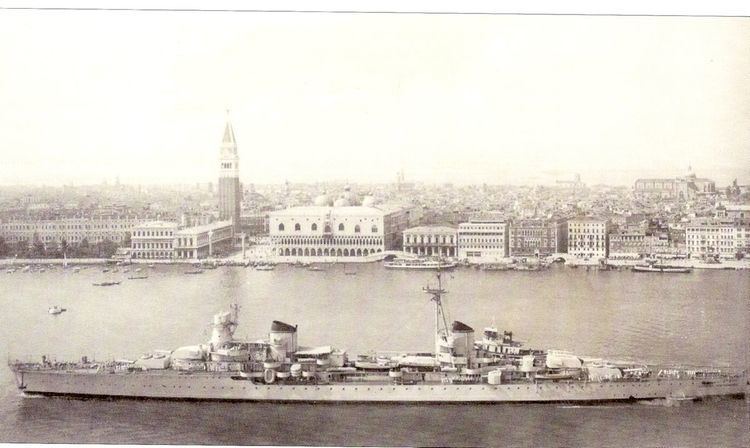Name Condottieri class In commission 1931–1972 | Built 1928–1937 Completed 12 | |
 | ||
Subclasses Giussano classCadorna classMontecuccoli classDuca d'Aosta classDuca degli Abruzzi class | ||
The Condottieri class was a sequence of five, different, light cruiser classes of the Regia Marina (Italian Navy), although these classes show a clear line of evolution. They were built before World War II to gain predominance in the Mediterranean Sea. The ships were named after military commanders (condottieri) of Italian history.
Contents
Each class is known after the first ship of the group:
Giussano class:
Cadorna class:
Montecuccoli class:
Duca d'Aosta class:
Duca degli Abruzzi class:
Evolution
The first group, the four Di Giussanos, were built to counter the French large contre-torpilleurs, and therefore they featured very high speed, in exchange of virtually no armour protection. The two Cadornas retained the main characteristics, with minor improvements to stability and hull strength.
Major changes were introduced for the next pair, the Montecuccolis. About 2000 tons heavier, they had significantly better protection, and upgraded power-plants to maintain the required high speed. The two Duca d'Aostas continued the trend, thickening the armour and improving the power plant again.
The final pair, the Duca degli Abruzzis completed the transition, sacrificing a little speed for good protection (whose scheme was the same of the Zara-class heavy cruisers) and for ten (instead of eight) 6-inch /55 guns.
Service
All ships served in the Mediterranean during World War II.
The ships of the first two subclasses (with the exception of Luigi Cadorna) were all lost by 1942, primarily to enemy torpedoes (with Bartolomeo Colleoni sunk by destroyers at the Battle of Cape Spada after being crippled by HMAS Sydney, Alberico da Barbiano and Alberto da Giussano suffering a similar fate at the Battle of Cape Bon, and Armando Diaz sunk by a submarine), which led to many authors (including Preston) to question their real value as fighting ships. However, the subsequent vessels fared considerably better with all, except Muzio Attendolo (sunk by an Allied bombing in December 1942), surviving the war.
After the end of the war, Eugenio di Savoia and Emanuele Filiberto Duca d'Aosta were given respectively to the Greek Navy and the Soviet Navy as war reparations; Luigi Cadorna was quickly stricken, Raimondo Montecuccoli became a training ship, and the Duca degli Abruzzi subclass served on in the Marina Militare until the 1970s, with Giuseppe Garibaldi becoming in 1961 the first European guided missile cruiser.
